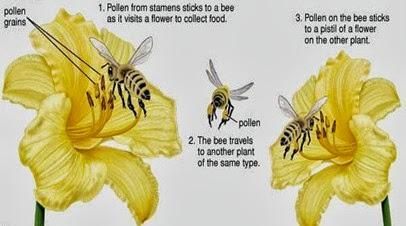
What is reproduction? Explain the mode of sexual reproduction in plants.
Answer
480.9k+ views
2 likes
Hint: Reproduction is the biological process in which the organisms produce its offspring. This process provides the continuity to the species from one generation to the other generation. This process is classified into two types as sexual and the asexual means of reproduction.
Complete answer:
In plants the sexual reproduction takes place by the fusion of the male and the female gamete. The male reproductive part is called androecium and the female reproductive part is called gynoecium. The pollen grains are the male reproductive gamete which is produced in the anther. The ovule is the female reproductive gamete which is produced by the ovary. These two haploid pollen grains and the ovule fuses by the process of fertilization. This sexual reproduction takes by either self-pollination or the cross pollination.

Self-pollination takes place when the male and the female gamete comes from the same plant. The cross pollination takes place from the gamete from the different plants. In cross pollination, the pollen from the other plants transmitted by the wind, water, insects or other animals etc. The pollen gets into the pollen tube and enters into the ovule in the micro Pyle pore. By this process of fertilization, the ovule gets fertilized and this converts into the embryo. This formed embryo undergoes the meiosis process of cell division and develops into the blastomeres.
Note: The self-pollination occurs mainly in the orchid crops. The sunflower, peas, tridax, tomato, barley, peaches can self-pollinate itself. Whereas the cross pollination occurs in the plants of maize mulberry, pumpkin, berries, grapes, pulps, grasses, catkins, maple etc.
Complete answer:
In plants the sexual reproduction takes place by the fusion of the male and the female gamete. The male reproductive part is called androecium and the female reproductive part is called gynoecium. The pollen grains are the male reproductive gamete which is produced in the anther. The ovule is the female reproductive gamete which is produced by the ovary. These two haploid pollen grains and the ovule fuses by the process of fertilization. This sexual reproduction takes by either self-pollination or the cross pollination.

Self-pollination takes place when the male and the female gamete comes from the same plant. The cross pollination takes place from the gamete from the different plants. In cross pollination, the pollen from the other plants transmitted by the wind, water, insects or other animals etc. The pollen gets into the pollen tube and enters into the ovule in the micro Pyle pore. By this process of fertilization, the ovule gets fertilized and this converts into the embryo. This formed embryo undergoes the meiosis process of cell division and develops into the blastomeres.
Note: The self-pollination occurs mainly in the orchid crops. The sunflower, peas, tridax, tomato, barley, peaches can self-pollinate itself. Whereas the cross pollination occurs in the plants of maize mulberry, pumpkin, berries, grapes, pulps, grasses, catkins, maple etc.
Recently Updated Pages
Express the following as a fraction and simplify a class 7 maths CBSE

The length and width of a rectangle are in ratio of class 7 maths CBSE

The ratio of the income to the expenditure of a family class 7 maths CBSE

How do you write 025 million in scientific notatio class 7 maths CBSE

How do you convert 295 meters per second to kilometers class 7 maths CBSE

Write the following in Roman numerals 25819 class 7 maths CBSE

Trending doubts
Give 10 examples of unisexual and bisexual flowers

Draw a labelled sketch of the human eye class 12 physics CBSE

Differentiate between homogeneous and heterogeneous class 12 chemistry CBSE

Differentiate between insitu conservation and exsitu class 12 biology CBSE

What are the major means of transport Explain each class 12 social science CBSE

Franz thinks Will they make them sing in German even class 12 english CBSE




